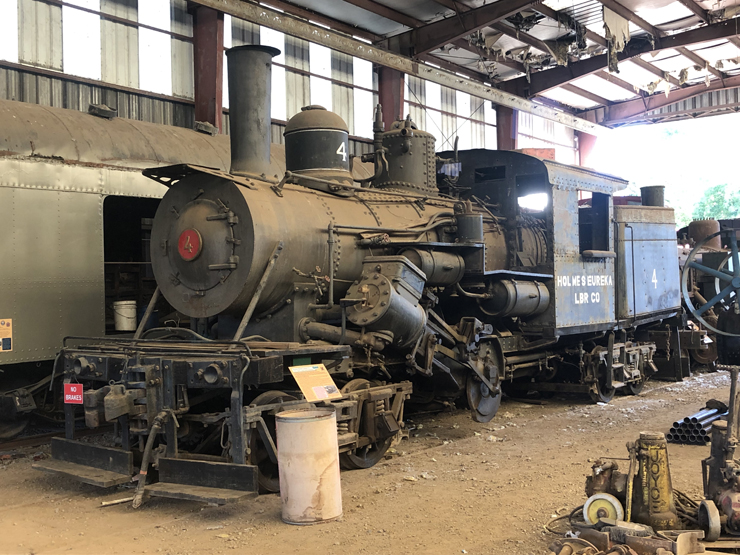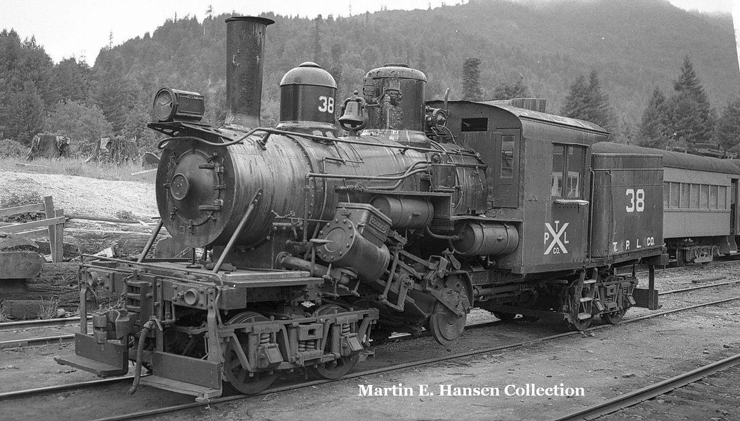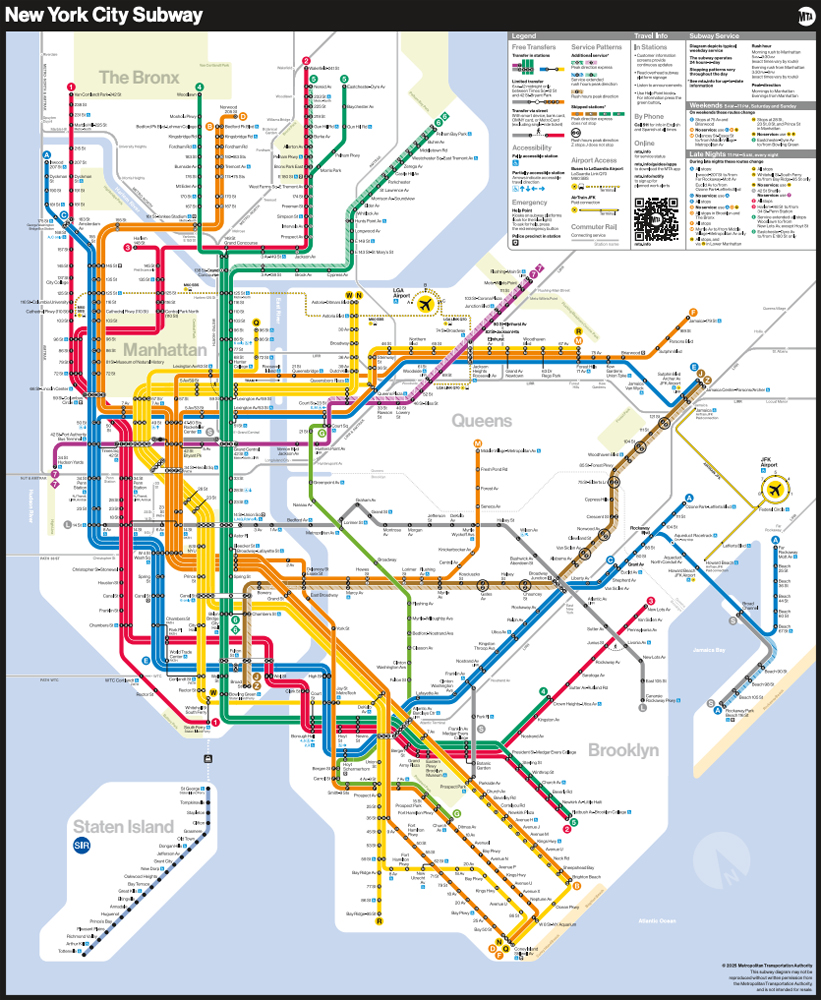WILLITS, Calif. – A rare Climax locomotive is under restoration on the West Coast.
Holmes Eureka Lumber No. 4, a two-truck, 60-ton Climax built in 1922, is under restoration at the Roots of Motive Power, a railroad and logging museum in Northern California.
Early this year, a proposal was submitted to the Roots of Motive Power board of directors asking to do an inspection on the locomotive to see if a return to service was possible. It was enthusiastically approved and on Feb. 1 work began. The ultimate goal of the first phase is to pull the tubes out of the boiler and ultrasound the shell. If favorable results are found, then an operational restoration will move forward. Project lead Kyle Stockman, along with Roots members Jelani Hall and Eli Mosher, have removed most of the tubes from the boiler as well as other items. Since the locomotive only needs to meet state boiler code, all involved are optimistic No. 4 will be operational by its centennial in two years.
Of the almost 1,050 locomotives built by the Climax Manufacturing Co., only 20 are still in existence, and of those only three are operational worldwide. The oldest in operation, built in 1919, is the newly overhauled Moore-Keppel & Co. No. 9 at West Virginia’s Cass Scenic Railroad. Next is White Mountain Central No. 6. Built in 1920, it originally worked for the Beebe River Lumber Co. No. 6 not only has the distinction of being a wood burner but is probably the most used Climax to date as it ran nearly every day during tourist season since returning to service in the 1970s. Last is Puffing Billy Railway No. 1694, built in 1928 and operating in Australia.
Holmes Eureka Lumber was built in October 1922 and carries builders’ No. 1621. Its early life was spent in Humboldt County, Calif., hauling logs. Early in its life, a tree or other large object fell on the locomotive, damaging the engineer’s side of the cab and leading to a sag in the frame which is still visible today. The locomotive was sold in 1937 as No. 38 to the Pacific Lumber Co., in Scotia, Calif., where it worked many years before being retired. In 1955 Bert Rudolph purchased No. 38 and moved it on itsown wheels to his home in Willits, Calif.; it spent 35 years there until being acquired by Roots Of Motive Power. The locomotive at that point was rebuilt and repainted as Holmes Eureka Lumber No.4. Due to leaky flues it last ran in the early 2000s.
Roots of Motive Power is home to many pieces of local logging steam-powered equipment, including locomotives, steam donkeys, and cranes. Many are operational. Every year Roots has events open to the public, including the annual steam-up and barbecue in September where everything that can run will run, and annual Christmas trains.















This museum is news to me. A few years back we went to Willits and rode the California Western “Skunk Train” railbus to Northspur and then the train to Fort Bragg. Over-nighting there, we rode in reverse the following day. The picture I got of the operation was of just hanging on, and providing some additional tourism in that part of the state. I saw or heard nothing about Roots of Motive Power while passing through Willits.
If they don’t have to restore the Climax to FRA standards it will be far, far less costly than if they did, and the timeline might be realistic. When the equipment has to meet FRA standards, there are always complications that cause delays, and cost overruns abound. (Think of all the starts and stops the Nevada Northern has endured with its restorations over the years.)
The story doesn’t seem to mention just what trackage it will run on. To avoid FRA compliance I’d suppose it is some isolated track owned by the museum. Can anyone elaborate?
When they pull this off, could it be the beginning of restoration of rail service to Willits? It’s on the Northwestern Pacific which has been mostly out of service for a long time. We can dream, can’t we?
Stupid question, but I honestly don’t know the answer. Why is the locomotive subject only to a state boiler code and not an FRA standard? Thanks in advance!
PS:
I errored in not adding a note about the years it took Congress to develop the 1889 “Act to Regulate Interstate Commerce” as it is not a act to regulate commerce, or a act to regulate railroads. The Congress complied to all design layout in the U.S. Constitution.
Robert Sartain, good question when you have not learned all the points of the “U.S Constitution” and the “Commerce Clause” which only give the Federal Government jurisdiction over locomotives that handle interstate or foreign commerce which is transportation. States have jurisdiction over industry within their state, and the Federal has no jurisdiction.
Logging railroads (or a quarry RR + others) do no carry commerce, logs are not way-billed, and even if they crossed state lines it does not give the Federal any jurisdiction, it is not commerce, it is INDUSTRY. In the case I described below, the Parker-Young Company leased the B&M common-carrier branch and removed it from their ownership at night and weekend, and ran their log trains over the line with the lumber company’s engine and lumber company train crews. The Federal ICC had no jurisdiction, and they could have run other log engines but the B&M insisted in making the lease that they only use ICC Federal boiler rules legal engines. There were no legal Safety Appliance cars in most of their log trains. The logging company had two legal engines maintained to use.
One log railroad in northern New Hampshire ran into VT and even into Canada and back over that border several times but it was not under any federal jurisdiction. It did not carry commerce, it did not conduct transportation, it was industry. It is because of our “Constitution” that things are kept in order. States control industry.
A fourth two-truck Climax which ran until needing its 1472 overhaul is also at Cass. Nothing official has been announced, but I believe they are planning to get it operational again. It had been the power for the DURBIN ROCKET until going in the shop for rebuild. A Heisler is now powering that excursion,
I appreciate the bit of back story explaining the bent frame, it was one of the first things I noticed looking at both photos. Definitely suits the character of a logging loco.
The correct name of the Climax owner was the Woodstock Lumber Co. and their logging railroad was called the Beebe River RR. They built the town of Beebe River and has a 21 mile SG railroad with 60# rail, 20 degree curves and max 7% grade. The Beebe River RR had Shays #1 to #5, CN 2958,1578,935,2394,3066. Shay 3066 had legal ICC papers and was run over the Boston & Maine RR’s Lincoln branch under lease of 20 miles (Livermore Falls- Lincoln) of the common-carrier at night hauling logging cars, wood sawdust cars, link and pin cars with no air brakes for a number of years. The Parker-Young Company took control of the Woodstock Lumber Co. and the East Branch & Lincoln RR and moved the Climax up to the EB&L which J .E. Henry built. The Parker-Young was the longest logging railroad in New England as he EB&L was 24 miles up to Sweetwater, then ran under trackage rights lease 17 miles over the B&M (night and weekend only) and BBRR 21 miles to Sandwich Mt. Some fine saw logs ran directly from Sweetwater to Beebe River, and waste from BB river went to paper mill at Lincoln.
The White Mountain Central #6 has a new boiler and original boiler is on display.